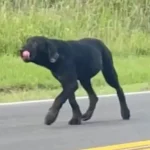Polydactyl Cats Explained: Fascinating Facts About Extra-Toed Felines
Polydactyl cats, often referred to as “Hemingway cats” due to their association with the famed author Ernest Hemingway, are known for their unique genetic trait that allows them to have extra toes on their paws. This condition, called polydactylism, is quite fascinating and supports a myriad of interesting facts about these special felines.
Understanding Polydactylism
The term “polydactyl” comes from the Greek words poly (meaning many) and daktylos (meaning fingers or toes). Typically, a cat has five toes on each front paw and four on each back paw, totaling 18 toes. However, polydactyl cats can have anywhere from six to eight toes on each paw, leading to a total of 20 to 28 toes. This genetic anomaly is the result of a dominant mutant gene (Pd) inherited from their parents.
Fun Facts About Polydactyl Cats
- Polydactyl cats are not a distinct breed; rather, the trait can occur in various cat breeds. However, it is most commonly seen in Maine Coons, where historically, around 40% have shown this extra toe trait.
- These cats often appear to have “mittens” due to those extra toes, which leads many owners to affectionately label them as “mitten cats” or “thumb cats.”
- The genetic mutation associated with polydactyl cats has been observed in several other mammal species, including dogs, horses, and even humans.
The Famous Hemingways
Ernest Hemingway was a known lover of polydactyl cats. He received a six-toed kitten named Snow White from a ship’s captain and subsequently became a devoted caregiver to many such cats at his residence in Key West, Florida. His home, now a museum, is famous for hosting these unique felines who roam freely.
One of the most notable polydactyl cats was Jake, who gained fame for having 28 toes. This ginger tabby demonstrated the remarkable variations that polydactylism can present, and he lived a cherished life among his loving caretakers.
Polydactyl Cats as Good Luck Charms
Historically, sailors often believed that having a polydactyl cat on board was a good omen, as these cats were thought to have better balance and agility while sailing. Due to their wide paws, polydactyl cats can often secure a firmer grip in precarious environments, making them valuable companions on sea voyages. This belief has contributed to their prominence particularly in regions of Canada and the United States, where they were notably common during the early 20th century.
Presidential Favorites
Polydactyl cats have even found favor among presidents. Theodore Roosevelt had a polydactyl cat named Slippers in the White House. Slippers, a bluish-gray tabby, became so well-liked that he was allowed to attend formal dinners!
More about Their Care
Polydactyl cats do not generally require special care compared to their typical counterparts. However, their unique toe structure can lead to some considerations:
- Extra toes may require regular claw trimming to help prevent overgrowth.
- It’s important to monitor their paws for any signs of issues due to the extra digits.
- Regular veterinary checkups can help ensure their unique anatomy is healthy.
Conclusion
Polydactyl cats are an extraordinary fluke of nature, bringing joy and fascination with their unique characteristics and quirky histories. From being cherished in homes to their famous connections with literary figures and sailors, these extra-toed felines hold a special place in the hearts of many cat lovers worldwide.








Facebook Comments